Recent Articles
-
Christmas Sword Buying Guide 2025
Dec 03, 25 10:53 PM
Saber Forge Review
Our Saber Forge Review is a hands on review of their sparring grade lightsabers - probably about as close as any collector can get to owning a "functional" lightsaber that are made strong enough to spar with against a bokken..
What do they look like in person? How do they actually hold up? And what are they REALLY like? Our Saber Forge review answers all these questions and more..
Part One - Custom Lightsabers? Really?
Review by Daniel Dancombe, Manitoba, Canada
One of my earliest memories is of watching the original Star Wars film with my older brother in our parent’s house. We had this weird old armchair in our living room that could fold out into a bed, or could be folded back on itself and turned into a little hideout just the right size for two kids. I think they were called convertible chairs? Anyway, after we would finish A New Hope we would pretend that we were in the cockpit of the Millennium Falcon battling against the Empire. We would save up the cardboard rolls from Christmas wrapping paper and have epic Lightsaber duels in the living room. When we were older and the weather was nice we would head outside and spar with broomsticks to further our adventures as Jedi. Those memories are some of the happiest I have from my childhood, and they were on my mind when I went with my brother this past December and saw The Force Awakens in theater.
What I’m saying is, I’ve had Star Wars on the brain for quite some time.
Having collected swords for nearly a decade I would have been remiss if I hadn’t checked out the possibility of purchasing Lightsabers on the internet as well. Of course I had! I’ve wanted to be a Jedi all my life – at least part of my interest in sword collecting came from those movies, and I would have been remiss to not at the very least Google “buying Lightsabers online.” The last time I did so was several years ago, and I discovered that if I wanted something I could “use” – that is, something that wasn’t made so cheaply it would fall apart if it whacked something – I was going to be out significantly more money than I was willing to spend. As much as any two swords I owned at the time. Granted, I didn’t look around that hard, but since I was already collecting real swords I didn’t feel the need to be very intensive.
Years went by and suddenly new Star Wars films were being made. As the hype for the new film was rising in the fall of 2015 I decided to see what was out there for Lightsabers again. And wow, had things ever changed.
A bit about the world of custom Lightsabers
Since I first searched for Lightsabers in 2008 or 2009 a host of companies have popped up, all of them constructing Lightsabers for eager Star Wars fans. Companies like Ultrasabers, Vader’s Vault, Parksabers, and others were producing high-quality Lightsaber replicas. The best part? Most of these Lightsabers were intended for dueling – constructed in such a way that they could withstand mock combat. And the prices had come down by a significant margin.
While there was variety between the companies, most of the sabers they made were pretty similar. The most common materials used in making the handles were plastic, resin, and aircraft aluminum, and the blades were made out of varying grades of plastic or poly-carbonate. Inside the handles would be an LED light-bulb for lighting up the blade, a power cell or set of batteries, and a sound board that creates the saber noises (humming, crashing, etc) and projects them through a speaker. The biggest differences were between the design of the handles with some companies having simpler designs and other much more intricate.

The company I chose to go with was called Saber Forge. The Lightsaber I purchased from them was the first one I laid my eyes on at their website, and I’ll be honest with you – it was love at first sight. I spent over a month after seeing that Lightsaber checking out different companies, reading and watching reviews, and comparing prices. But I kept. Coming. Back. To that first Lightsaber I saw at Saber Forge. It was a very simple design called the “Disciple,” and I felt that it suited me very well. Finally, I could take it no longer. I placed the order and settled in to wait.
If you want to learn more about Saber Forge, look no further than the interview on SBG. But to recap, Saber Forge has been a custom Lightsaber producer since around 2008. Located in Oregan, USA, they have grown from a single man shop into a 50-person, multi-million-dollar business. The devices on their website are “functional” Lightsaber replicas – with the ability (for some) to light up, be used in mock combat, and make those distinctive sounds we know and love.
There are three different price levels of sabers - Apprentice (75$
hilt – what I ordered and forms the basis of my Saber Forge review), Elite (149$ hilt), and Crystal (299$ hilt). Those
prices are for just the hilt, no blade or electronics. At each level there are
several different designs – currently the most designs are at the Elite level.
Each saber can be bought at one of four "tiers", with higher tiers
having more features.
Tier 1 — Initiate — just a handle, but can have electronics added at a
later date.
Tier 2 — Warrior — handle + Blade and lights (add 55$ to cost of handle)
Tier 3 — Champion — handle + Blade and lights + sound and in-hilt rechargeable
power cell (add 205$ to cost of handle) - this is the level of Apprentice saber
handle that I purchased.
Tier 4 — handle + Blade and lights + sound and in-hilt rechargeable power cell
+ changeable sound fonts + changeable blade colours (add 355$ to cost of
handle)
Saber Forge’s prices are consistent with the rest of the market… mostly. Entry-level sabers can be found cheaper elsewhere, sabers that also have sound boards and LED’s. Where Saber Forge departs from some of the other companies is that a lot of the “extras” that you pay for at other companies - things like in-hilt recharge, covertec wheel (for attaching to a belt clip), light-up activation button (matching your chosen blade colour), and a heavy-grade dueling blade – come included in the price for Tier 3 and above. Adding those extras at a different company adds to the cost of the blade – once you factor in the extras, a Saber Forge tends to come in at less than other companies. In-hilt recharge alone can tack an extra $75 or more to the cost of a budget saber. In terms of value for money, I was already pleased with my purchase before it even left their shop.
Disclaimer
I am not affiliated with the company beyond this Saber Forge review and interview, nor did I receive any compensation for doing this. I paid for the product and shipping in full.
Part 2 - Saber Forge Review: the disciple
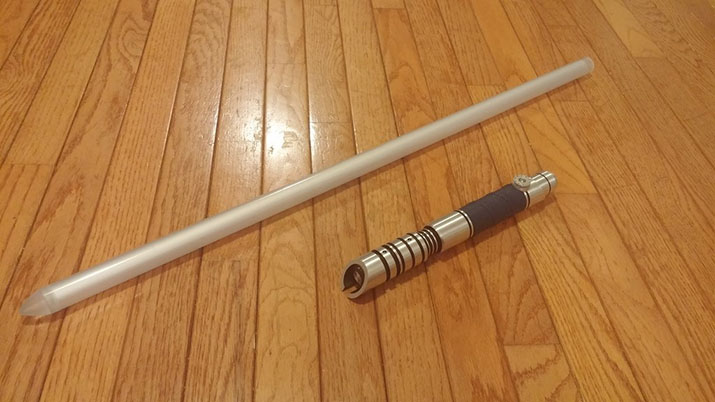
The import sheet listed it as an “LED flashlight,” which is technically correct (as we all know, the best kind of correct) so Canada Customs didn’t absolutely destroy my bank account to let me import it. Thanks guys!
The handle was wrapped in multiple layers of bubble wrap, while the blade was loose inside the box. All other parts including the charger, belt clip, and Allen wrench came packaged within the container.
I pulled the handle out immediately and just had to stare at it for a bit. It looked larger than it did in the pictures, which was not a bad thing – just surprising at first. It also had a good amount of heft to it, which I appreciated as it did not feel like a toy. As strange as this may sound, the handle felt exactly like I thought a Lightsaber would feel.
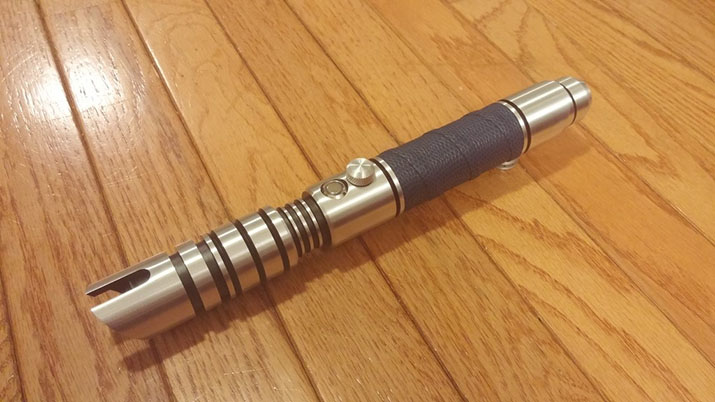
I used the Allen wrench to remove the blade plug (a small device that protects the LED when the blade is not attached, also included in the price of the Lightsaber at Saber Forge) and attach the blade. Finally I removed the kill key – a small knob that prevents power from draining from the battery when the saber is not in use. The activation switch lit up and the speaker projected the “bootup sound,” which in my case was a female voice saying “Sabercore Veridian” (the name of the sound font I had selected). I was ready to activate my saber, which I did.
And let me just say Oh. My.
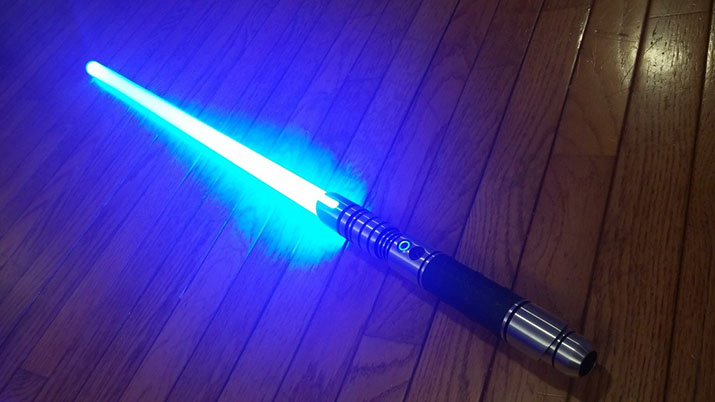
This was bright. I mean it was bright. It lit up the room and the lights were already on. More on that later.
Lest I stop sounding like a seasoned veteran of the review world and more like a giddy fanboy, I’ll now move into my assessment of this product. While this Saber Forge review is not an actual “sword review,” I did want to treat it like such and so I’ve divided the review into sections. Follow along and see what a “real Lightsaber” is like.
The Handle
The handle of Saber Forge sabers are machines from pieces of aircraft aluminum. My first impression of the handle was largely informed by my previous Lightsaber experiences, which range from “none” to “the toys my kids have.” Having never handled one that wasn’t made out of plastic I was immediately struck by how heavy it felt. Not too heavy by any means – but it felt very solid.
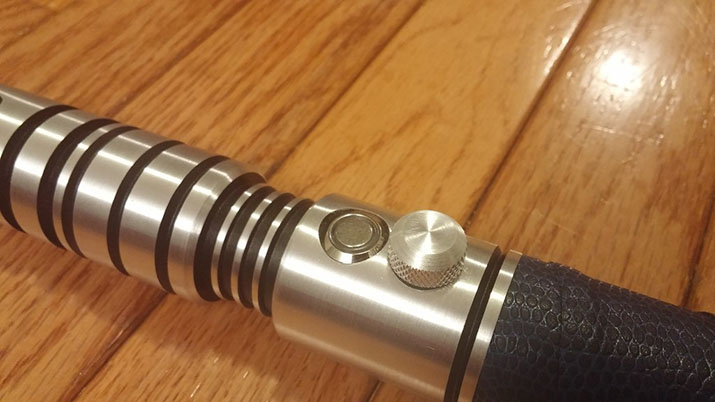
The Disciple’s handle has the option to have leather wrap on the lower part, and I opted for the colour called “Cobalt Stingray” which is a royal blue colour. The handle has a narrow section where your hand naturally falls when gripping single handed. When wielding with two hands you are required to “choke up” your grip a bit more, but I still found it comfortable.
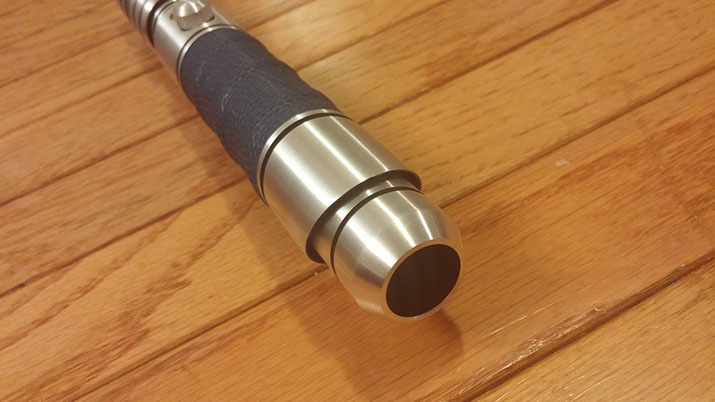
There is a small wheel/knob at the bottom of the handle which is used for connecting the Lightsaber to the belt holder. It affects the grip somewhat, but all you need to do is adjust your hand position and the issue resolves itself. I had no problem finding a comfortable way to hold the Disciple handle.
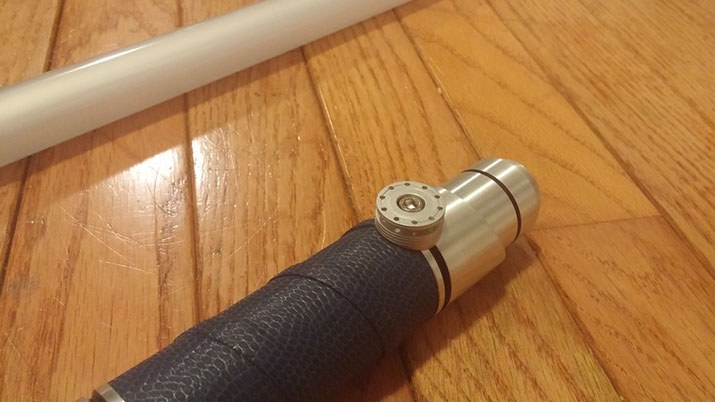
Below the activation button is something called a “kill key,” and it slides into the charging port to disconnect the battery from the electronics of the saber. This allows the battery to not constantly drain by lighting up the activation button.
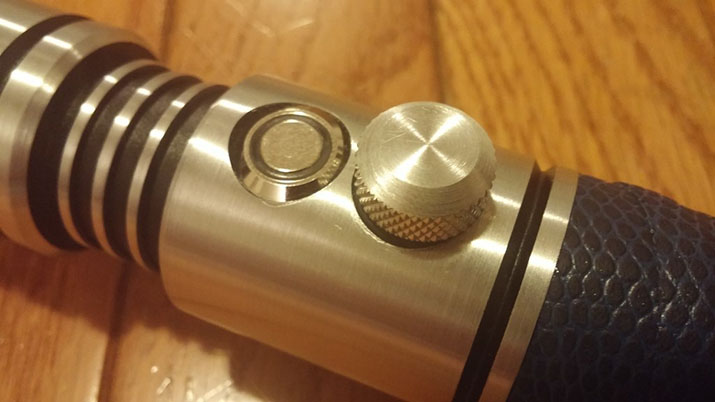
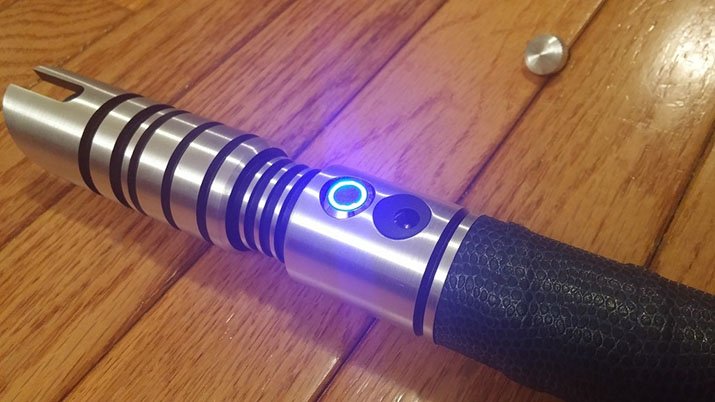
Now in preparing for this Saber Forge review I looked around online for common complaints or concerns that people have had with Saber Forge products. One comment I’ve seen in a few different places and in a different Saber Forge review was that the edges of the aluminum could be very sharp. So I tested the edges of my Disciple, especially near the emitter (where the blade and handle connect, a very pointy-looking part).
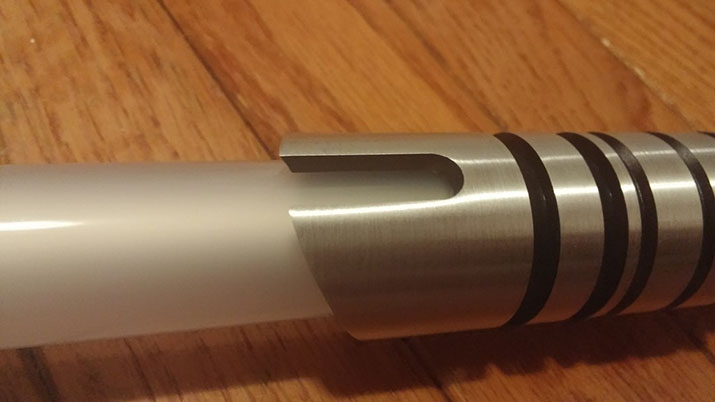
The edges were very defined, but not dangerously sharp. It was nothing that felt like it would cut me during normal use and in several weeks of using the Lightsaber I have not had any issues. Maybe years of handling swords has desensitized me to sharp objects? (Probably not).
The Blade/LED
This was the famed new “12w+” LED that Saber Forge is just starting to use. It was my first chance to see it in person. I have no way of comparing it to the 6w LED or even the 12w that it replaced, but like I said before – seriously bright.
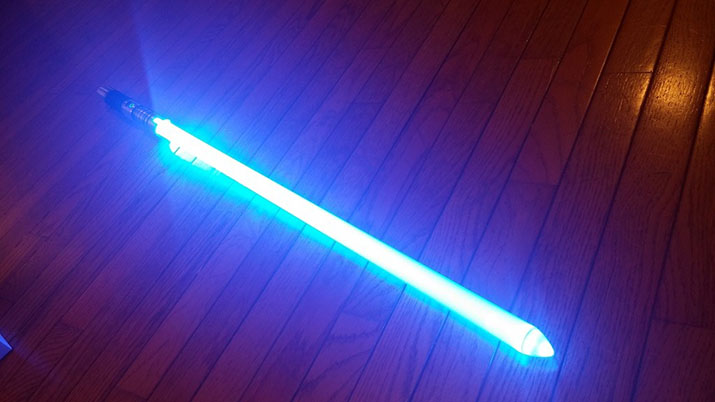
Pictures really don’t do it justice.
With the blade plugged in:
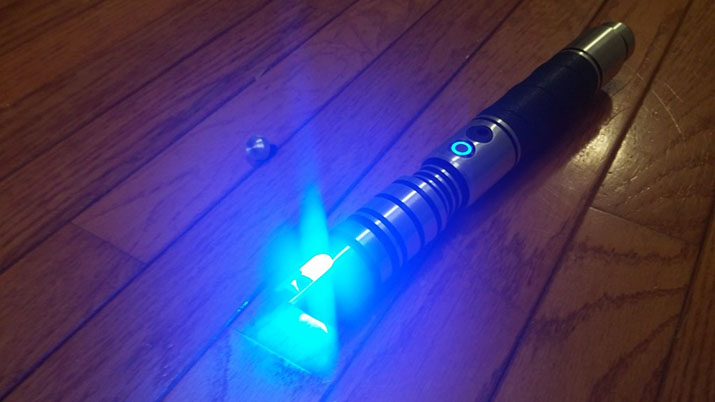
Word of warning – don’t look directly at the LED when there is no blade plugged it. It’s bright enough to damage your eyes.
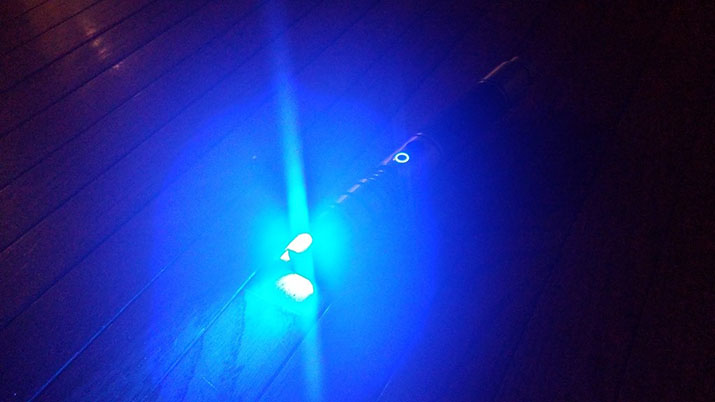
The blade itself is a 1” diameter clear poly-carbonate tube. The walls of the tube are frosted which allows the LED colour to fill the blade completely. The blade does appear brighter at the base, but only marginally. It may be more noticeable with a 6w diode.
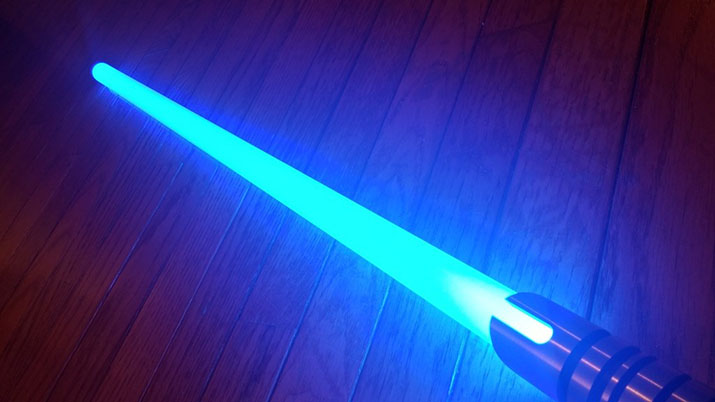
I gave the blade a few test whacks against some objects around the house and it seemed sturdy and solidly affixed in the handle. Lightsabers at Saber Forge are advertised as being rated for sparring and heavy dueling – even against wooden wasters or bokken.
The Sound/Electronics
There are two optional “sound fonts” available on Champion-tier Saber Forge sabers. For my Disciple I chose the “Veridium” font, aka the “Light Side” Lightsaber sounds. These sounds – the activation noise, hum, movement noises, clash, and deactivation – all are pretty standard Lightsaber noises. No complaints there.
The “Crimson” sound font, aka the “Dark Side” sounds, are much deeper and – in my opinion – more sinister sounding. I don't think you'd be required to be a villain if you used it, but it would definitely suit someone who walks a little closer to the Dark Side of the Force.
Each font has an "auxiliary" noise that occurs when you press the activation button once shortly when the saber is online. For the Veridium font, that sound is a "blaster deflect". For the Crimson font, that sound is the "saber lock" noise, or the sound when two sabers lock together or deflect Force lightening. While both sound cool I doubt I'll use the auxiliary noise all that much.
I did notice that there is sometimes an oversensitiveness on the part of whatever sensors are used in detecting when the saber "clashes" with something - that is, when the blade is swung and stopped or changes directions abruptly it makes an impact sound instead of a swing. While it was noticeable, it did not serve as much of a distraction when using or a negative to the saber overall.
Handling/Use
The majority of the weight is, unsurprisingly, in the handle. This makes for a weapon with a very low POB (") that is very lively in the hand. I've heard people describe them as feeling like rapiers or epees, I would say that they are closer to a Chinese Jian - especially since in combat Lightsabers were slashing weapons. If I was going to try and model Lightsaber combat after swordplay in real life, I would probably look to the use of jian in tai-chi or wushu.
The narrow grooves in the handle plus the imitation leather prevent the metal handle from feeling too "slippery" - a concern of mine when I ordered it. I found using the saber in sword forms to be easy and not nearly as tiring as using a real sword for long periods of time. This could be a really good training weapon when learning sword forms, especially for beginners.
Blade on Blade Combat
Coming Soon..!
Extras
Blade plug – easy to use and kept my LED safe. What more could I ask for?
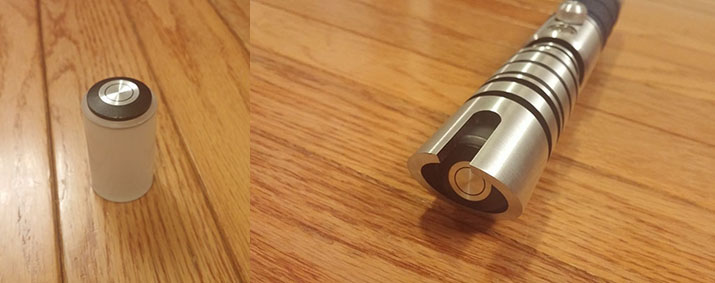
Belt clip - the "Covertech" belt system is pretty much standard in the Lightsaber community, and involves two parts: One is a round metal or plastic wheel that is attached to the Lightsaber, the other is a plastic belt clip that holds the saber in place.
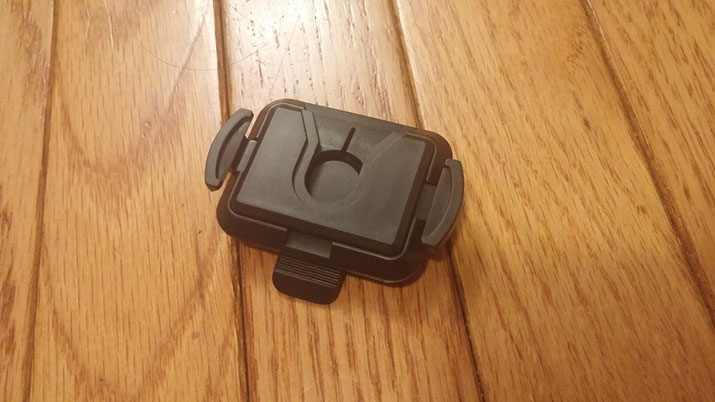
I actually wore the saber on my hip for the better part of a day before writing the Saber forge review just to see how it felt (with the blade removed and the blade plug in, of course - I didn't want to keep whacking into things all over my house with the blade). I found it comfortable to wear and noted that despite regular activities it did not loosen or come free of the clip. I nearly wore it out of the house before I remembered in time, which made me wonder - what are the open carry laws regarding Lightsabers in Canada?
Charger - All Champion-level Lightsabers from Saber Forge come with a "smart charger" - a charger that alerts you when the power cell is fully charged. The cord plugs into the hole where the kill key goes, and a light on the adapter indicates if the power cell is charging (orange) or fully charged (green). I found it exceedingly simple to use.
Conclusion
The Saber Forge Lightsaber that I ordered has, simply put, exceeded my expectations in every way. From the fit and finish of the handle, the brightness of the LED, the quality of the sound, and the customer service experience, I walked away from this an extremely happy buyer. The one downside to this is probably going to be the impact it has on my wallet - because it looks like I'll now have to have a "Lightsaber budget" in addition to my "sword budget." That is NOT going to go over well with certain individuals in my life...
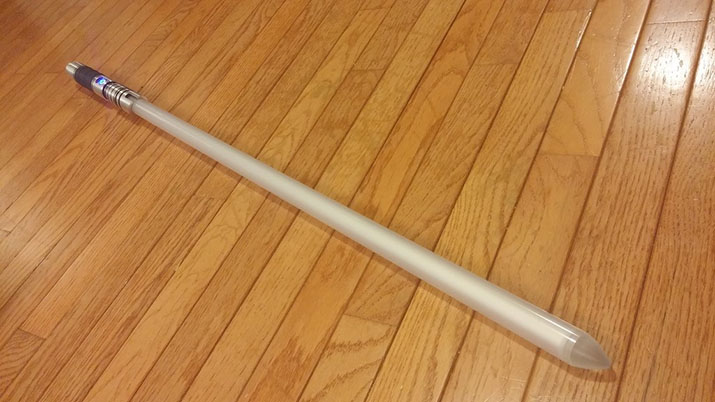
There could be a lot of overlap between the sword collecting and Lightsaber collecting communities, and in my opinion this would be a great place to start. I'd encourage all readers of this Saber Forge Review to mosey over to http://www.saberforge.com and take a look around. Also consider joining their forum at http://www.saberforgeforum.com. It's a lot of fun, and you may find something bright and shiny to hang on your wall next to your swords (though probably not as sharp as the rest of them).
I hope this Saber Forge Review has been helpful. To return to Decorative and Functional Fantasy Swords from Saber Forge Review, click here

Buying Swords Online Can Be DANGEROUS!
Find the Best Swords in the:
Popular & Recommended ARTICLES

The ONLY true free online magazine for sword enthusiasts. Delivered once a month on the 1st day of the month, no filler and no BS, just the latest sword news & info delivered straight to your inbox.












